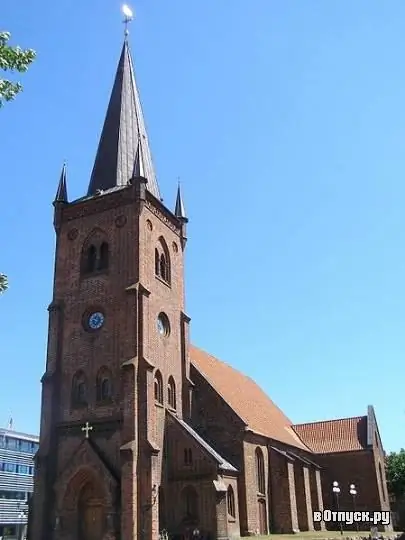
Description of the attraction
Vejle's most important historical landmark is the Lutheran Church of St. Nicholas. This is one of the oldest structures in Denmark. The church dates back to the 13th century. It was originally built in the Romanesque style in honor of Saint Nicholas, the patron saint of merchants and sailors.
In the 15th century, the church was reconstructed in the Gothic style with two transepts and a tower. On the north side of the temple, in the transept, in a glazed sarcophagus, there is a woman's mummy, which has survived to this day. This mummy was discovered in 1835 in a swamp, and archaeologists have dated it 450 BC.
The church is built of red brick, on the north side of the transept, the church has distinctive features - these are 23 spherical recesses about 15 centimeters in diameter. There are the skulls of 23 robbers who were once caught in a nearby forest and executed. The church also houses a sculpture of the Danish priest and historiographer Anders Sørensen Wedel.
The church was significantly damaged during the Thirty Years' War (1618-1648) by Wallenstein's army. Since then, the church has undergone large-scale restorations in 1744, the 19th century and in the 60s of the 20th century.
Nowadays, the church is a wonderful city museum in Vejle, which is visited with pleasure by a huge number of tourists from all over the world.






